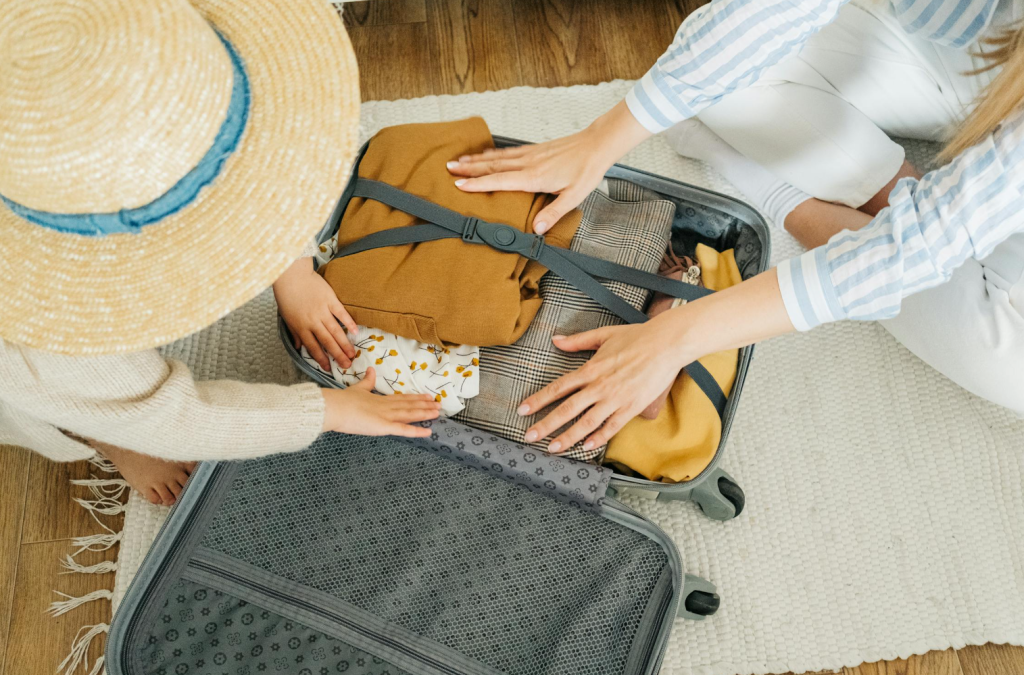Understanding Your Destination’s Climate
When it comes to planning a vacation, packing is often the most stressful part. But understanding the climate of your destination can ease that burden significantly. Packing smartly not only ensures comfort but also allows you to enjoy your trip to the fullest.
Why Climate Matters for Packing
Have you ever been caught in a rainstorm without an umbrella, or frozen in your shorts during a winter getaway? The right clothes can make or break your vacation experience. Knowing what to expect weather-wise helps you pack efficiently and stay comfortable, no matter where you are.
Types of Climates to Consider
Tropical
Tropical climates are typically warm and humid, perfect for beachgoers but challenging for those unprepared for sudden downpours.
Temperate
Temperate regions can vary widely throughout the year, often requiring a mix of summer and winter clothes depending on the season.
Arid
Arid climates are hot and dry during the day, but temperatures can drop significantly at night. Understanding these fluctuations is key to packing appropriately.
Cold
Cold climates are characterized by low temperatures and potential snowfall. Insulating layers and waterproof gear are essential.
Mixed
Mixed climates can be unpredictable, with sudden weather changes. Packing for versatility is crucial to tackle whatever nature throws your way.
Essential Packing Tips
Create a Packing List
Start with a packing list tailored to your destination’s climate. A list helps ensure you don’t forget essentials and keeps your packing organized.
Versatile Clothing Choices
Choose clothing that can be mixed and matched. Neutral colors and classic styles are perfect for creating multiple outfits from a few key pieces.
Layering Strategies
Layering is vital for adapting to changing temperatures. A lightweight base layer, an insulating layer, and a waterproof outer layer can prepare you for anything.

Packing for Specific Climates
Tropical Destinations
Must-Have Items
Pack lightweight, breathable fabrics like cotton or linen. Maxi dresses, shorts, and tank tops are great staples, along with a swimsuit and cover-up.
Accessories and Footwear
Don’t forget a wide-brimmed hat, sunglasses, and flip-flops for the beach. Waterproof sandals are also essential for unexpected rain.
Temperate Regions
Key Clothing Pieces
Include layers like cardigans, light jackets, and long-sleeve shirts. A mix of short and long pants will help you adapt to the day’s weather.
Seasonal Considerations
Check the forecast before you pack. If you’re traveling in spring or fall, be ready for temperature swings, and pack accordingly.
Arid Climates
Protective Clothing
Long-sleeve shirts and pants made from light, breathable fabric protect your skin from the sun. Light colors are best for reflecting heat.
Hydration Essentials
Always carry a reusable water bottle. Staying hydrated is crucial in arid climates, where dehydration can sneak up on you.
Cold Weather Packing
Layering Techniques
Start with thermal base layers, followed by insulating layers like fleece. Your outer layer should be waterproof and wind-resistant.
Insulating Fabrics
Materials like down or synthetic insulation trap heat, keeping you warm without adding too much bulk.
Mixed Climate Adventures
Planning for Sudden Changes
Be prepared for anything with a packable rain jacket and versatile clothing that can easily transition from warm to cool weather.
Multi-Functional Clothing
Look for clothes that serve multiple purposes—like pants that convert to shorts or a scarf that can double as a blanket.
Packing Techniques for Efficient Travel
Rolling vs. Folding Clothes
Rolling clothes saves space and minimizes wrinkles. Experiment with both methods to see what works best for your style of packing.
Utilizing Packing Cubes
Packing cubes help keep your suitcase organized and make it easier to find items without digging through your bag. They also maximize space.
Conclusion
Packing for a vacation doesn’t have to be stressful. By understanding the climate of your destination and following these packing tips, you can ensure a comfortable and enjoyable trip. With the right wardrobe, you’ll be ready to tackle any adventure that comes your way.
FAQs
- How can I determine the climate of my destination? Check weather apps or websites for average temperatures and conditions during your travel dates.
- What are the best fabrics for travel clothing? Look for breathable, moisture-wicking materials like cotton, linen, or synthetic blends that dry quickly.
- How do I pack efficiently for a long trip? Plan your outfits ahead of time and pack versatile pieces that can be mixed and matched.
- Should I bring formal attire on vacation? If you have planned formal events, include one or two dressy outfits. Otherwise, stick to casual wear.
- How can I avoid overpacking? Stick to your packing list, focus on versatile items, and remember you can do laundry if needed.

